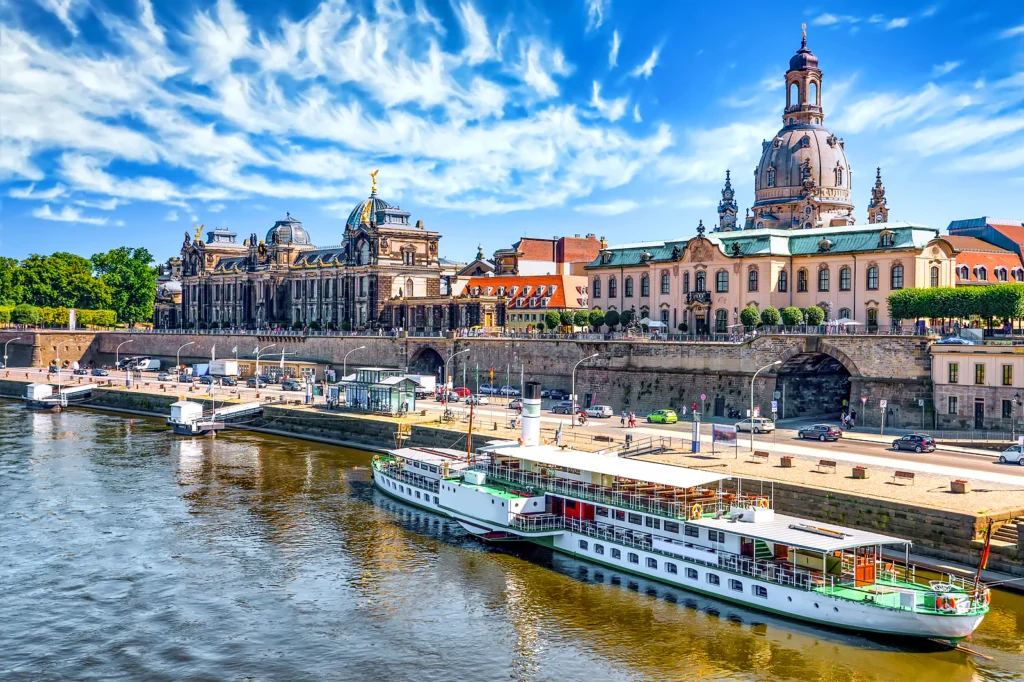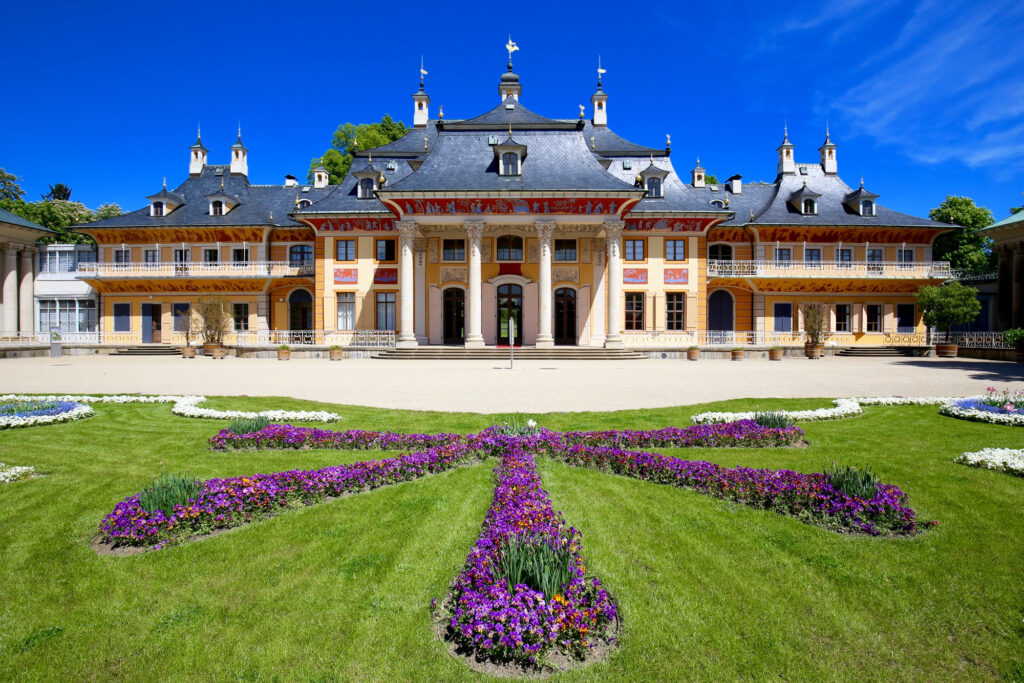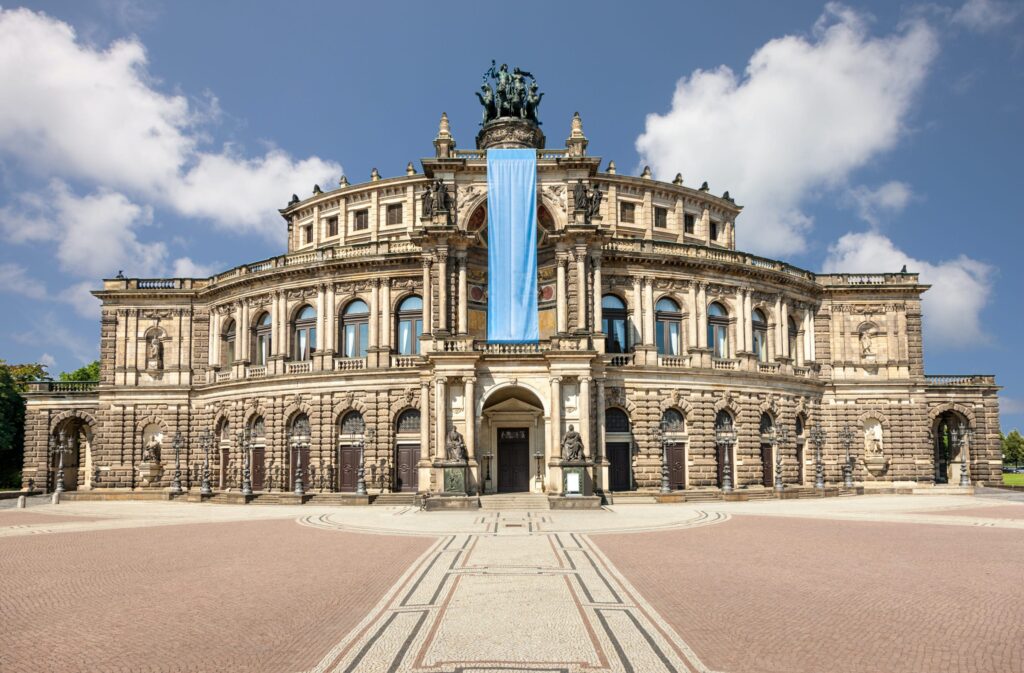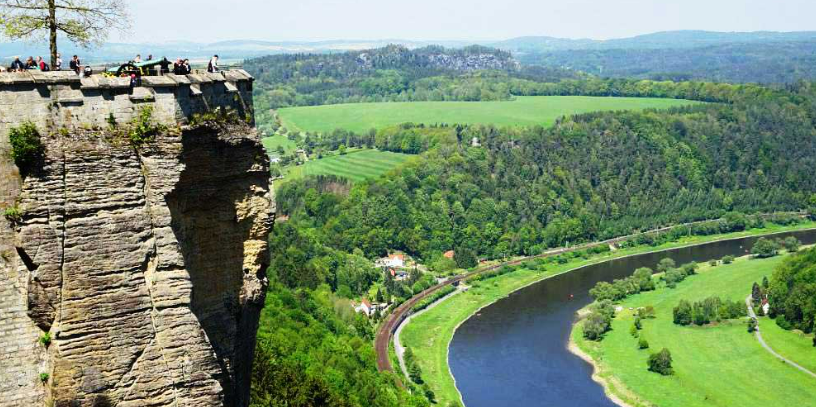Dresden is famous city in Germany and the capital of Saxony Land (state) located at eastern side. Dresden is the traditional capital of Saxony and the third largest city in eastern Germany after Berlin and Leipzig. It lies in the broad basin of the Elbe River between Meissen and Pirna, 19 miles (30 km) north of the Czech border and 100 miles (160 km) south of Berlin. Sheltering hills north and south of the Elbe valley contribute to the mild climate enjoyed by Dresden.

Dresden’s beauty is so natural that its cannot put enough in words, its unremarkable! It reveals itself to many visitors at first glance and is characterised by an irresistible combination of romantic landscape, baroque architecture and one of the most beautiful historic city centres in Germany. The second most visited place is “Florence on the Elbe” which we called a wealth of art and culture that can easily hold its own on an international level. The locals love and enjoy their city, its streets and squares and its concert halls with regular performances by world-class artists.
Stunning architecture, fascinating history, inspiring art and culture and lots of character – Saxony’s historic towns Dresden has good choice for many tourist.
Dresden is home to the oldest and biggest paddle steamer fleet in the world and a yearly steamship parade sees the impressive vessels sail in formation to Pillnitz Palace just outside town and back. They are accompanied by a large, joint concert of steam whistles and by many enthusiastic spectators on the banks of the Elbe. There are fixed dates at the start and end of the fleet’s main season.

Since 1971, Dresden’s International Dixieland Festival (in May) has been attracting fans of jazz and Dixieland tunes from across the world to the city to enjoy a diverse programme of acts.
Kraftwerk Mitte Dresden is a special venue for cultural experiences and testimony to Dresden’s lively cultural scene. The former power station is now a place for dancing and singing. Among others, the Dresden State Operetta and tjg, a theatre ensemble specifically catering for children and young adults, have moved in here.
You can travel on the Loschwitz suspension railway at Körnerplatz for a three-minute ride up to the Löschwitzhöhe elevation to enjoy a fabulous view of Dresden. Built in 1900, it is considered to be the world’s oldest mountain suspension railway! Dresden’s famous Christmas stollen is more than just a cake. As a much-cherished tradition that goes back to the 15th century, it is part of the city’s culinary DNA. The cake is only prepared for Christmas according to a special recipe and simply delicious!

Another favourite German sweet for Christmas, called Dominostein, was also invented in Dresden. We very much recommend trying this delicacy covered in a thin icing of dark chocolate. One more for lovers of cake: Dresdner Eierschecke is a three-layered tray bake made of yeast dough. Again, we can only urge you to try it! On to the hearty stuff: Dresdner Sauerbraten is the local version of a traditional German roast with marinated meat, typically served with potatoes and red cabbage.
Only in Saxony: Fettbemme is a slice of dark rye bread with clarified butter and topped with sliced gherkins and sprinkled with salt. A simple dish that has even found its way into upscale Dresden restaurants.
Dresden Elbe Valley

The 18th- and 19th-century cultural landscape of Dresden Elbe Valley extends some 18 km along the river from Übigau Palace and Ostragehege fields in the north-west to the Pillnitz Palace and the Elbe River Island in the south-east. It features low meadows, and is crowned by the Pillnitz Palace and the centre of Dresden with its numerous monuments and parks from the 16th to 20th centuries. The landscape also features 19th- and 20th-century suburban villas and gardens and valuable natural features. Some terraced slopes along the river are still used for viticulture and some old villages have retained their historic structure and elements from the industrial revolution, notably the 147-m Blue Wonder steel bridge (1891–93), the single-rail suspension cable railway (1898–1901), and the funicular (1894–95). The passenger steamships (the oldest from 1879) and shipyard (c. 1900) are still in use.
